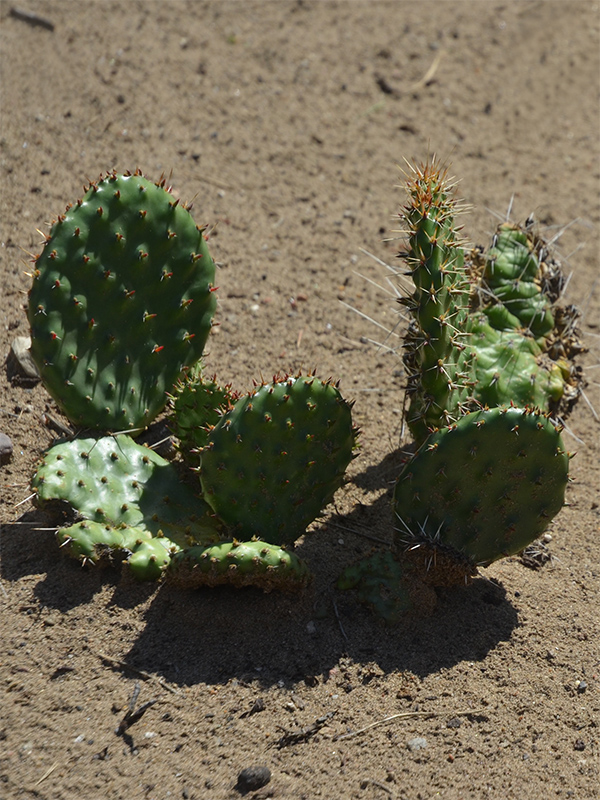
Perennials, Tropicals > Opuntia > Opuntia basilaris > Opuntia basilaris
Opuntia basilaris
Beavertail Pricklypear
Origin: Southwestern United States of America and northwestern Mexico.
| Family |
| Cactaceae |
| Genus |
| Opuntia |
| Species |
| basilaris |
| Category |
| Perennials, Tropicals |
| Type |
| Shrub (evergreen) |
| USDA Hardiness Zone |
| 8a - 10b |
| Canadian Hardiness Zone |
| Requires cool season protection under glass. |
| RHS Hardiness Zone |
| H5 |
| Temperature (°C) |
| -15 |
| Temperature (°F) |
| 5 |
| Height |
| 40 cm |
| Spread |
| 80 cm - 1 m |
Photographs
Description and Growing Information
Flowering Period
| Landscape |
| Winter interest, among potted succulent collections, in rock gardens, as a potted patio plant or as a specimen. |
| Cultivation |
| Best in very fast draining soils and full sun. |
| Shape |
| Clumping. |
| Growth |
| Medium |
| Pests |
| No known pests or diseases. |
| Habitat |
| Dry, well-drained sandy, gravelly, and rocky soils on upper bajadas and moderate slopes in the lower mountains. |
| Leaf Description |
| Glamorous or lightly-spined broad-ovate succulent leaves. |
| Flower Description |
| 5 -7 cm pink-magenta solitary flowers that bloom during the summer. |
| Fruit Description |
| Small ovate prickly pears that grow along the edges of the leaves. |
| Colour Description |
| Foliage can vary in colour from a silvery green to medium green tone. Prickly pears vary from a copper-brown to a reddish brown. |
| Texture Description |
| Smooth to spiny. |
| Notable Specimens |
| Desert Botanical Gardens, Phoenix, Arizona, United States of America. The University of Alberta Botanic Garden, Devon, Alberta, Canada. |
| Propagation |
| Division or rooting of pads or seed. |
